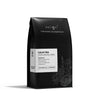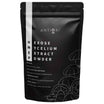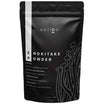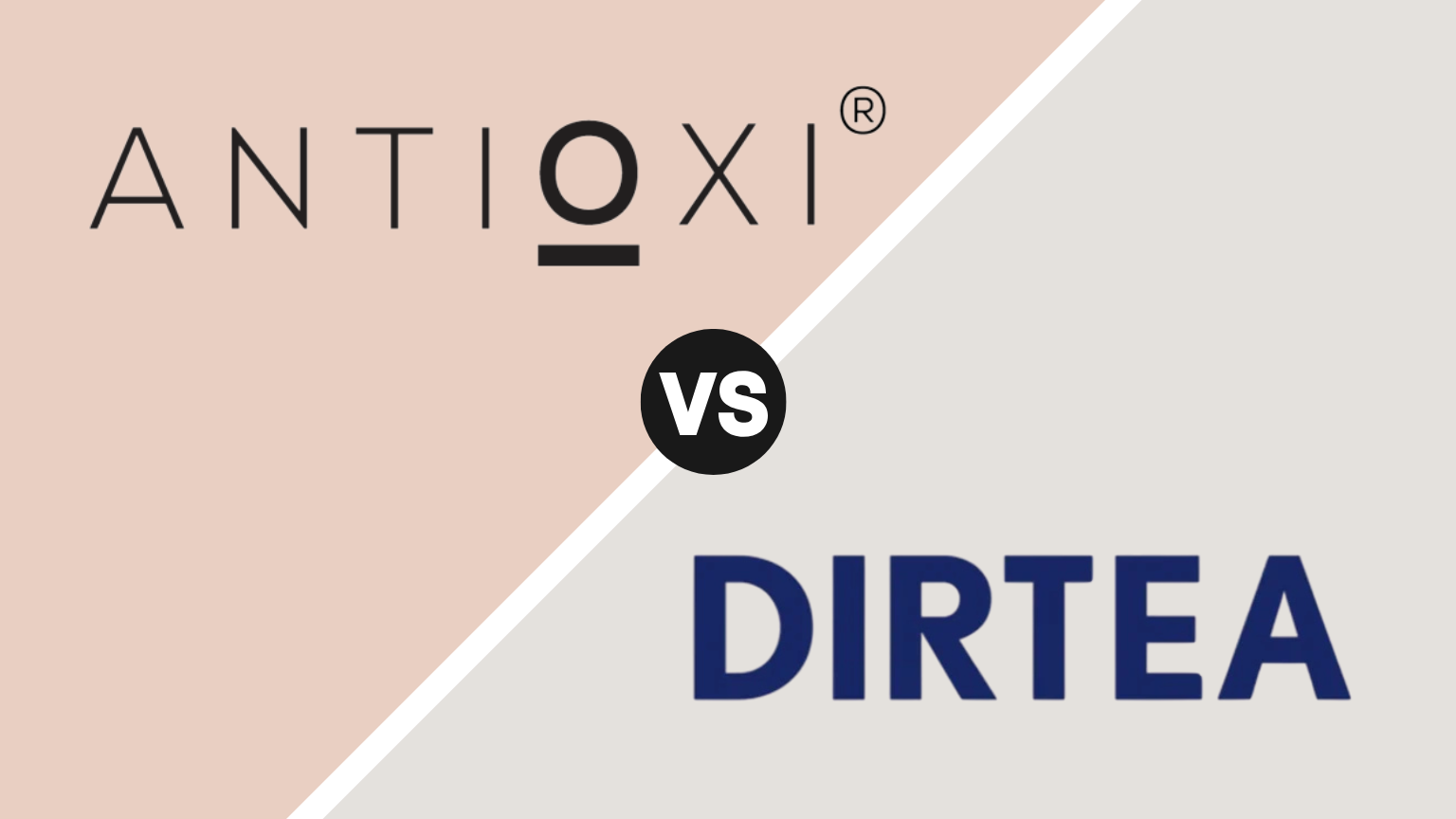Ovarian cancer is a serious and often silent disease that affects thousands of women worldwide each year. It is known as the "silent killer" because its early symptoms are often subtle and mistaken for other benign conditions, such as bloating or digestive issues. This results in many cases being diagnosed at an advanced stage when treatment options are more limited.
However, increased awareness and understanding of ovarian cancer, its symptoms, risk factors, and treatment options can help improve early detection and survival rates.
This article delves deeply into ovarian cancer, exploring its complexities while also shedding light on the potential role of medicinal mushrooms in immune support.
What Is Ovarian Cancer?
Ovarian cancer develops in the ovaries, the two small, almond-shaped organs responsible for producing eggs and female hormones such as estrogen and progesterone. It is the most lethal gynecologic cancer, primarily due to late detection.
There are three main types of ovarian cancer:
- Epithelial Ovarian Cancer: The most common type, accounting for about 90% of cases. It originates in the outer layer of the ovary and typically spreads before detection.
- Germ Cell Tumors: These arise from the cells that produce eggs and are more common in younger women.
- Stromal Tumors: A rare type of ovarian cancer that develops in the connective tissue cells responsible for hormone production.
Despite its high mortality rate, early diagnosis and advances in treatment have improved survival chances significantly. Understanding the signs and risk factors of ovarian cancer is crucial in reducing its impact.
Symptoms of Ovarian Cancer
Unlike some cancers that present with clear early symptoms, ovarian cancer often produces vague, persistent discomfort that can easily be overlooked. Common symptoms include:
- Persistent bloating and abdominal swelling: Many women experience occasional bloating, but if it becomes frequent and does not go away, it could be a warning sign.
- Pelvic or abdominal pain: Unexplained, ongoing discomfort in the lower abdomen should not be ignored.
- Early satiety (feeling full quickly) and appetite changes: Many women report a loss of appetite or a sensation of being full after eating only small amounts of food.
- Frequent urination or increased urgency: A sudden change in urinary habits without a urinary tract infection.
- Changes in bowel habits: Persistent constipation or diarrhea that is not linked to dietary changes.
- Unexplained weight loss: Any unintentional weight loss without a clear cause should be evaluated by a doctor.
These symptoms can be attributed to less serious conditions, but if they persist for more than two weeks and do not respond to normal treatment, medical evaluation is necessary.
Early detection greatly improves treatment outcomes.
Risk Factors for Ovarian Cancer
The exact cause of ovarian cancer remains unknown, but researchers have identified several factors that can increase a woman's risk:
Age is one of the primary risk factors, with most cases occurring in women over 50, particularly after menopause. Family history also plays a crucial role; those with close relatives who have had ovarian or breast cancer are at a higher risk.
Genetic mutations in the BRCA1 and BRCA2 genes significantly increase the likelihood of developing ovarian cancer. Women who inherit these mutations have a lifetime risk ranging from 17% to 44%, compared to the general population's risk of about 1-2%.
Reproductive history is another key factor. Women who have never been pregnant or who had their first pregnancy after the age of 35 may have an increased risk. Endometriosis, a condition where the tissue similar to the uterine lining grows outside the uterus, has also been linked to a higher likelihood of ovarian cancer.
Hormone replacement therapy (HRT), particularly estrogen-only therapy taken for more than five years after menopause, may slightly increase the risk. Additionally, lifestyle factors such as obesity and smoking have been associated with a higher chance of developing ovarian cancer.
Diagnosis and Early Detection
Detecting ovarian cancer early is challenging because there is no standard screening test for the disease. However, several diagnostic tools can help identify ovarian cancer in its earlier stages:
- Pelvic Examination: A routine pelvic exam may detect ovarian abnormalities, but small tumors are often missed.
- Transvaginal Ultrasound (TVUS): This imaging test uses sound waves to examine the ovaries and detect abnormalities.
- CA-125 Blood Test: CA-125 is a protein that is often elevated in ovarian cancer. However, it is not always a reliable indicator since non-cancerous conditions can also raise CA-125 levels.
- Genetic Testing: Women with a strong family history of ovarian or breast cancer may benefit from genetic testing to identify BRCA mutations and assess their risk.
Treatment Options
The standard treatment for ovarian cancer often involves a combination of surgery and chemotherapy. The specific approach depends on the stage and type of cancer.
- Surgery is the primary treatment and involves removing as much of the cancer as possible. This may include the removal of one or both ovaries, the fallopian tubes, and, in some cases, the uterus (hysterectomy).
- Chemotherapy is usually administered after surgery to eliminate any remaining cancer cells. It may also be given before surgery to shrink tumours.
- Targeted Therapy focuses on attacking cancer-specific genes or proteins. PARP inhibitors, for example, are effective in patients with BRCA mutations.
- Immunotherapy is an emerging approach that aims to boost the body’s immune system to fight cancer cells.
Prevention Strategies
While there is no guaranteed way to prevent ovarian cancer, certain measures may help reduce the risk.
Oral contraceptive pills have been shown to lower the risk when taken for several years. Pregnancy and breastfeeding also appear to offer some protective effects. Women at high genetic risk may opt for prophylactic (preventive) surgery, such as the removal of the ovaries and fallopian tubes, to significantly decrease their chances of developing ovarian cancer.
A healthy diet and lifestyle can play a role in reducing risk. Maintaining a balanced diet rich in fruits, vegetables, and antioxidants, along with regular physical activity, supports overall health and may lower cancer risk.
The Role of Medicinal Mushrooms
While medicinal mushrooms are not a replacement for medical treatments, they may offer complementary support.
Turkey Tail (Trametes versicolor) contains immune-enhancing compounds like polysaccharopeptides (PSP) that may help the body’s natural defence mechanisms.
Learn more about the benefits of turkey tail here
Hexose Mycelium (AHCC) has been studied for its anti-inflammatory and potential cancer-supportive properties.
Findings demonstrate that AHCC exerts an antiproliferative effect on ovarian cancer cells by blocking a major cancer survival pathway (STAT3). This not only slows tumour cell growth but also promotes pathways that make the cells more susceptible to death. This is similar to the mechanism observed in pancreatic cancer studies, where AHCC suppressed resistance proteins
Learn more about the benefits of hexose mycelium (ahcc) here
Although more research is needed, these mushrooms are increasingly being recognised for their potential role in holistic cancer care.
Conclusion
Ovarian cancer remains a major health concern due to its subtle symptoms and late diagnosis. Recognising early warning signs, understanding risk factors, and seeking medical evaluation when symptoms persist are crucial for improving survival rates.
Advances in treatment, along with preventive strategies like genetic testing and lifestyle modifications, provide hope for better outcomes. While medicinal mushrooms may offer immune support, they should always be used alongside conventional treatments under the guidance of a healthcare professional.
Raising awareness and prioritising early detection remain key to reducing the impact of this devastating disease.
References
Park HJ. Current Uses of Mushrooms in Cancer Treatment and Their Anticancer Mechanisms. Int J Mol Sci. 2022;23(18):10502. Published 2022 Sep 10. doi:10.3390/ijms231810502
Effects of cimetidine and PSK on interleukin-2 production by PBL in patients with advanced ovarian carcinoma during the course of chemotherapy. Kikuchi Y, Kizawa I, Oomori K, Iwano I, Kita T, Miyauchi M, Kato K. Nippon Sanka Fujinka Gakkai Zasshi. 1987;39(11):1987–1992.
Effects of PSK on interleukin-2 production by peripheral lymphocytes of patients with advanced ovarian carcinoma during chemotherapy. Kikuchi Y, Kizawa I, Oomori K, Iwano I, Kita T, Kato K. Jpn J Cancer Res. 1988;79(1):125–130.
Antitumour effect of PSK and its combined effect with CDDP on ovarian serous adenocarcinoma-bearing nude mice. Ishii K, Kita T, Hirata J, Tode T, Kikuchi Y, Nagata I. Nippon Sanka Fujinka Gakkai Zasshi. 1993;45(4):333–339.
Enhancement of anti-cancer activity of cisdiaminedichloroplatinum by the protein-bound polysaccharide of Coriolus versicolor QUEL (PS-K) in vitro. Kobayashi Y, Kariya K, Saigenji K, Nakamura K. Cancer Biother. 1994;9(4):351–358.





















Leave a comment
All comments are moderated before being published.
This site is protected by hCaptcha and the hCaptcha Privacy Policy and Terms of Service apply.